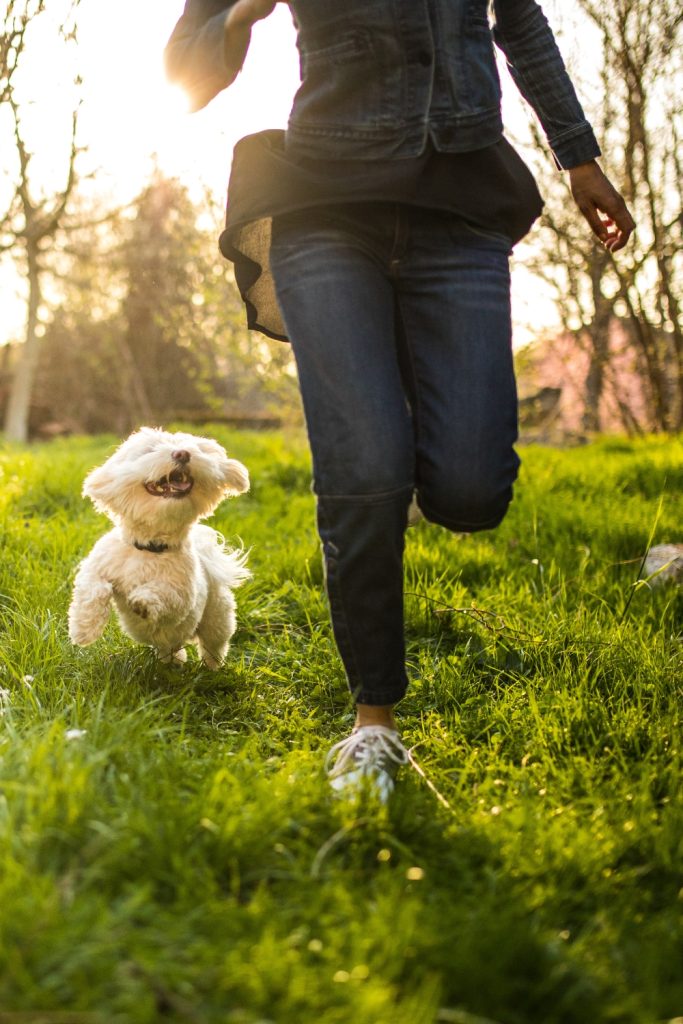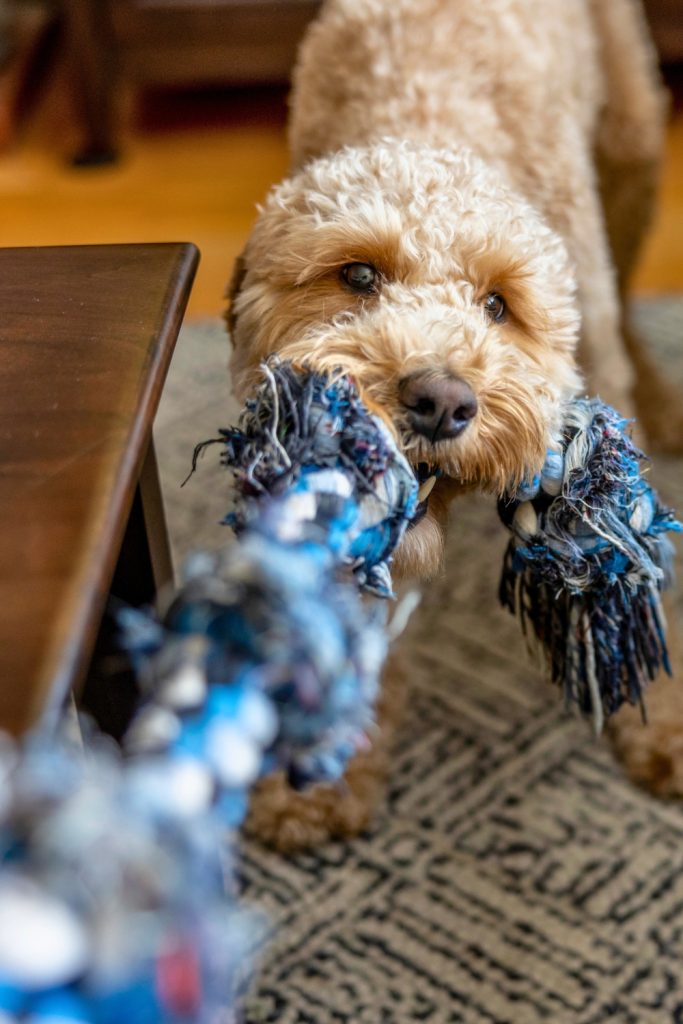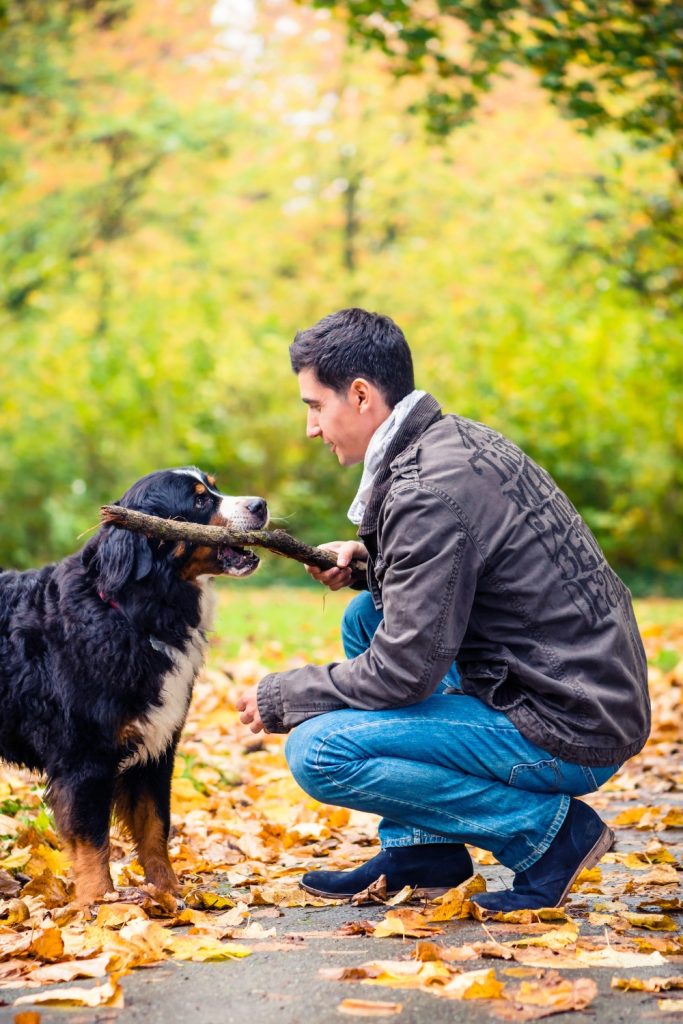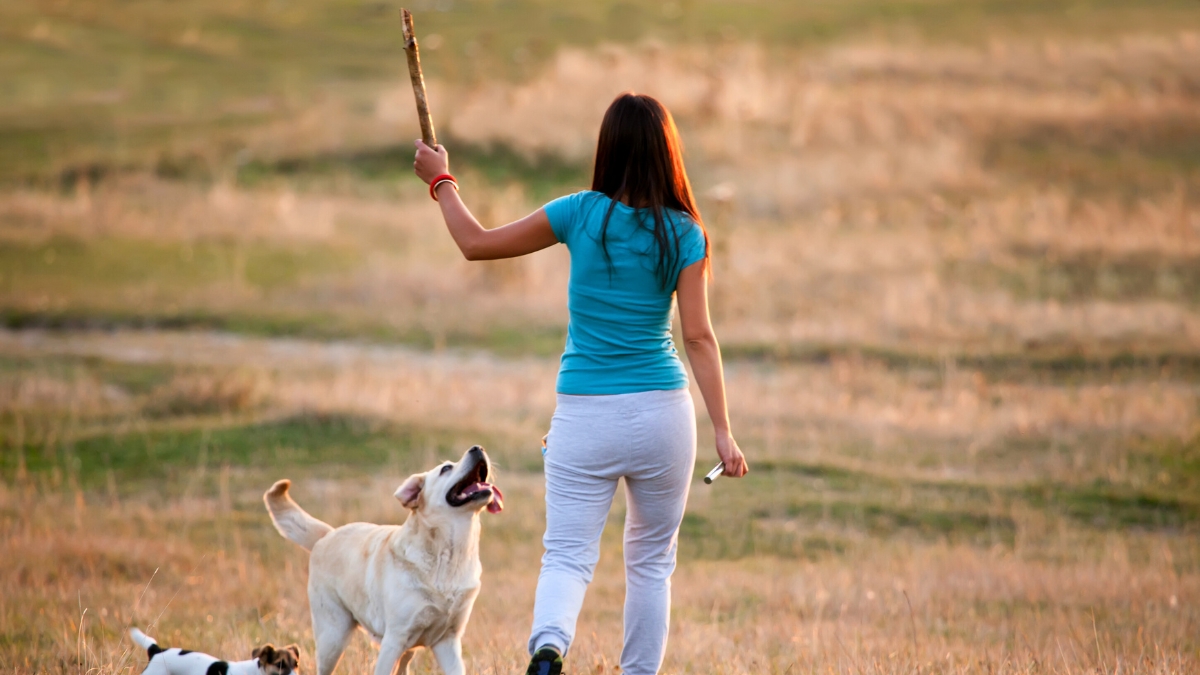Did you know that some of the most common games we play with our dogs might actually be harmful to them?
While playing is essential for a dog’s mental and physical health, certain activities can cause stress, injuries, or behavioral issues.
Here are six risky games that might seem fun but can actually be dangerous for your furry friend.
1. Throwing Tennis Balls
One of the most popular dog games might not be as harmless as it seems. There are two major reasons why throwing tennis balls can be problematic.
First, it can cause dental damage due to dental abrasion.
That fuzzy exterior on a tennis ball? It’s more abrasive than you think, especially once it picks up dirt and sand.
When your dog chews on it, those tiny particles act like sandpaper, slowly wearing down their tooth enamel.
Over time, this can lead to exposed roots, pain, and expensive vet treatments.
Second, constantly chasing a ball messes with your dog’s natural instincts.
In nature, dogs chase prey, catch it, and are rewarded with a meal. But with a ball, there’s no reward—just endless running.
This can lead to obsessive behavior, making dogs hyperactive, overly fixated, and even anxious when they don’t get to chase something.
It’s okay to throw a ball occasionally, but don’t make it your dog’s main activity.

2. Making Your Dog Walk on Two Legs
You might have seen adorable videos of dogs walking upright like humans, but this seemingly cute trick can cause serious harm.
A dog’s body is designed to distribute weight evenly across four legs.
Forcing them to walk on two legs puts immense strain on their spine, knees, and ligaments.
Veterinary specialists warn that this unnatural posture can lead to joint damage, chronic pain, and arthritis—especially in larger breeds.
If you’ve encouraged this behavior before, look out for signs of joint stress, including:
- Limping or stiffness
- Reluctance to play or jump
- Difficulty standing up or lying down
- Changes in mood or behavior
If you notice any of these, it’s time to check in with your vet.
Instead of making your dog walk unnaturally, engage them in safe activities like agility training, gentle balance exercises, or walking on varied terrain.

3. Chasing Your Dog
Have you ever chased your dog, thinking it’s just a fun game?
Turns out, this activity could be teaching your pup a dangerous lesson. Let me explain.
When your dog bolts out the door or slips off their leash, your first instinct might be to run after them.
But here’s the issue: chasing activates their flight instinct, making them think running away is a fun game.
And this “game” can have serious consequences.
- Physical danger: Dogs running during a chase might dart into traffic or end up in unsafe areas.
- Damaged trust: This behavior can weaken the bond between you and your dog. If they associate being caught with the start of a chase, they might start running away more often.
This can make recall training a nightmare when you really need them to come to you.
So, what should you do if your dog takes off?
Instead of chasing, try making exciting noises to grab their attention.
You could also offer them a treat to make coming back to you more appealing than running away.
Make a habit of practicing recall with your dog in a safe and controlled space. Call your dog to you and reward them with something amazing when they come.
Gradually increase the challenge by adding distractions or increasing the distance.
The goal is to make responding to your call the best choice your dog could ever make.

4. Using a Laser Pointer
It might seem like a fun, harmless way to engage your dog, but laser pointers can cause more harm than good.
Dogs have a strong prey drive, meaning they love to chase moving objects. The problem with a laser pointer? There’s nothing to catch.
This creates frustration and anxiety, as the chase has no end goal or reward.
Many dogs develop obsessive behaviors, such as:
- Fixation on lights and shadows
- Excessive barking or pacing
- Staring at floors or walls for hours, waiting for the laser to return
This condition, known as “laser pointer syndrome,” can lead to anxiety disorders and compulsive behaviors.
Instead, use toys that provide a tangible reward—like fetch toys, tug ropes, or interactive puzzle games.
5. Playing Tug-of-War the Wrong Way
This game sparks a lot of debate among dog owners.
Some swear it’s a great bonding activity, while others worry it might encourage aggression. The truth? It all depends on how you play.
When done right, tug-of-war can be an amazing activity for your dog.
Not only is it fun, but it also teaches important skills like self-control and proper use of their mouth.
Experts agree that with a few simple rules, this is one of the easiest and most enjoyable games for dogs.
That said, there are a few risks to consider.
Rough play can harm your dog’s teeth or jaw, especially in smaller breeds. And if the game gets too intense, it might accidentally encourage aggressive behavior.
To play safely, follow these rules:
- Use a sturdy, dog-safe toy (not an old towel or rope that can fray)
- Teach your dog to release the toy on command
- End the game if their teeth touch your skin
- Avoid overly aggressive pulling
Tug-of-war can even be a great way to teach commands like “drop it” and works as a warm-up before agility training or other activities.
But remember, tug-of-war isn’t for every dog. If your pup gets overly excited or shows signs of aggression, it’s best to skip this game.
And if your dog already has aggressive tendencies, this activity is definitely off the table.

6. Throwing Sticks
Throwing a stick might seem like a classic dog activity, but it comes with serious risks.
The problem? Sticks can splinter, break, and cause severe injuries.
If your dog tries to catch a stick mid-air, it could:
- Splinter in their mouth or throat
- Cause cuts, infections, or even pierce internal organs
- Land at an awkward angle and impale them
Veterinarians often treat dogs for stick-related injuries, some of which require emergency surgery.
The safer alternative? Rubber fetch toys that mimic sticks without the dangers.
These are designed to be durable, non-toxic, and safe for your dog to carry and chew.

Not all games are safe for dogs, even if they seem harmless at first. Activities like chasing, laser pointers, and walking on two legs can cause stress, injury, and behavioral problems.
Instead, opt for healthy, stimulating games that challenge their minds and bodies without unnecessary risks.
By choosing safer alternatives, you’ll not only keep your dog happy and healthy but also strengthen your bond with them in the best way possible.
Bibliography:
- https://sierraveterinary.com/2022/03/29/the-dangers-of-tennis-balls/
- https://collegeforpets.com/should-dogs-walk-on-two-legs/
- https://www.kinship.com/dog-behavior/three-myths-about-playing-your-dog
- https://wagwellpet.com/blogs/wagwell-blog/what-is-laser-pointer-syndrome
- https://www.preventivevet.com/dogs/playing-tug-of-war-without-encouraging-aggression-in-dogs
- https://vethelpdirect.com/vetblog/2020/12/10/should-i-throw-sticks-for-my-dog/
